This article describes the steps to create new volumes on the Storage Pool with Storage Spaces in Windows 11.
Windows has a new feature called Storage Spaces that groups multiple disk drives to create a storage pool and then uses capacity from the pool to create a virtual drive.
The virtual drive can be used to create new partitions, which help to protect data from storage failures. In addition, instead of your data being stored on a single drive, it is spread across multiple drives, making it fault-tolerant.
Below is how to create volumes or virtual drives from Storage Pool with Storage Spaces to protect your data when you have multiple hard disk drives on your Windows machine.
How to create volumes on a storage pool with storage spaces in Windows 11
As described above, Storage Spaces group multiple drives together to create a storage pool and then use capacity from the pool to create a virtual drive.
Below is how to create Storage Spaces in Windows 11
First, you will need two or more independent drives to create Storage Spaces. These can be virtual drives, but they should be independent.
To get started, click the Start menu -> Settings to open the Windows Settings app.
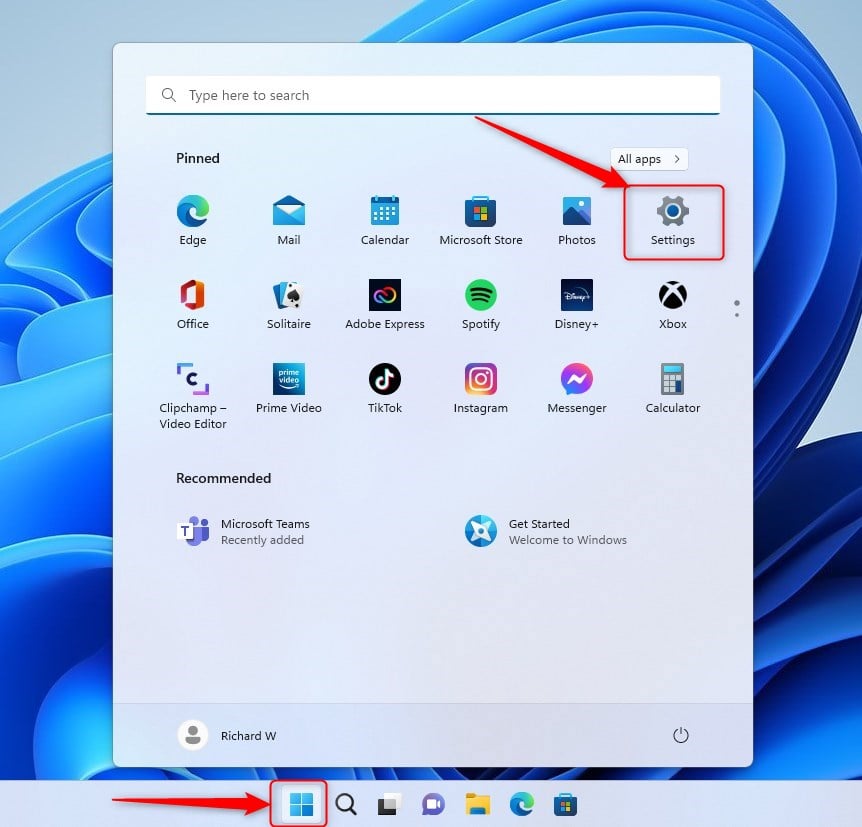
Within the Settings app, click on System on the left.
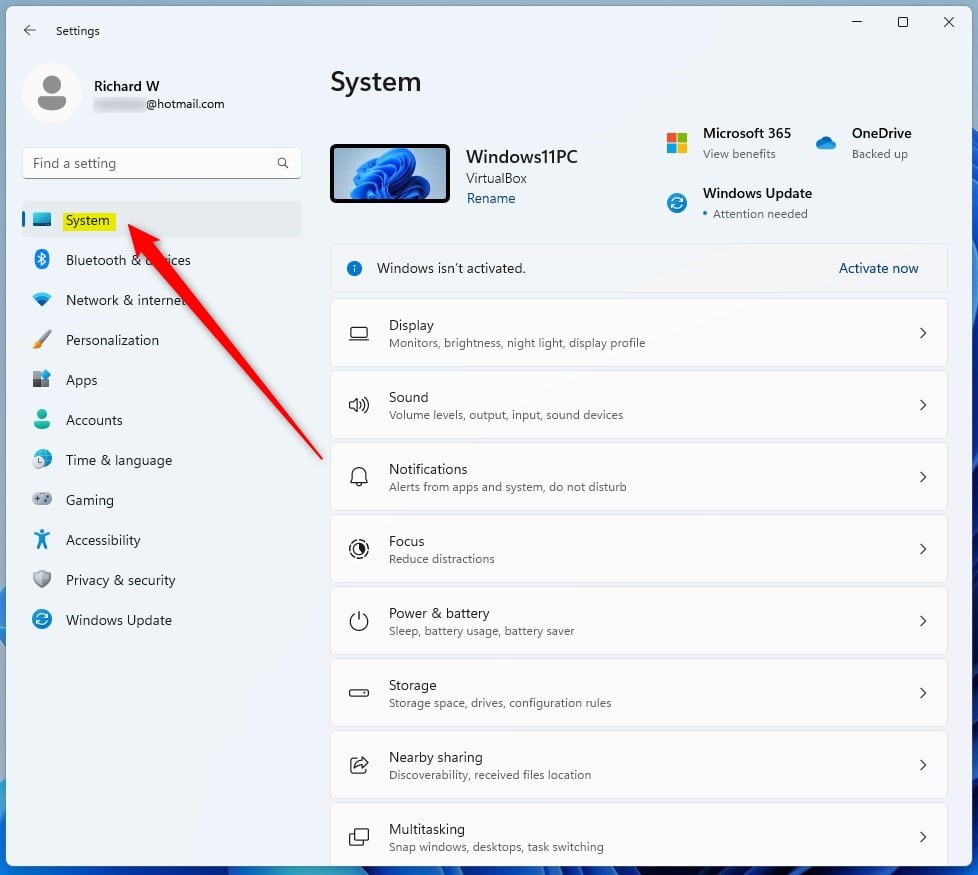
On the right, click on the Storage tile to expand.
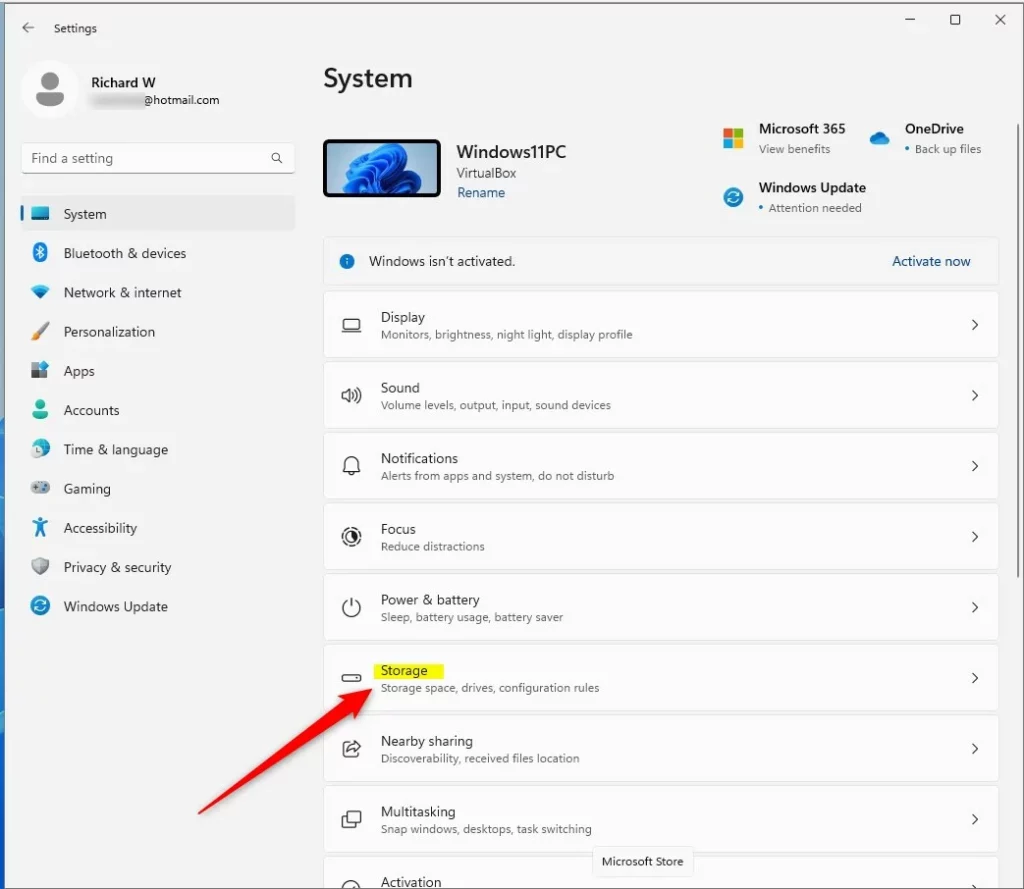
On the System -> Storage settings pane, click on the Advanced storage settings tile to expand.
Then select Storage Spaces on the expanded tile as highlighted below.
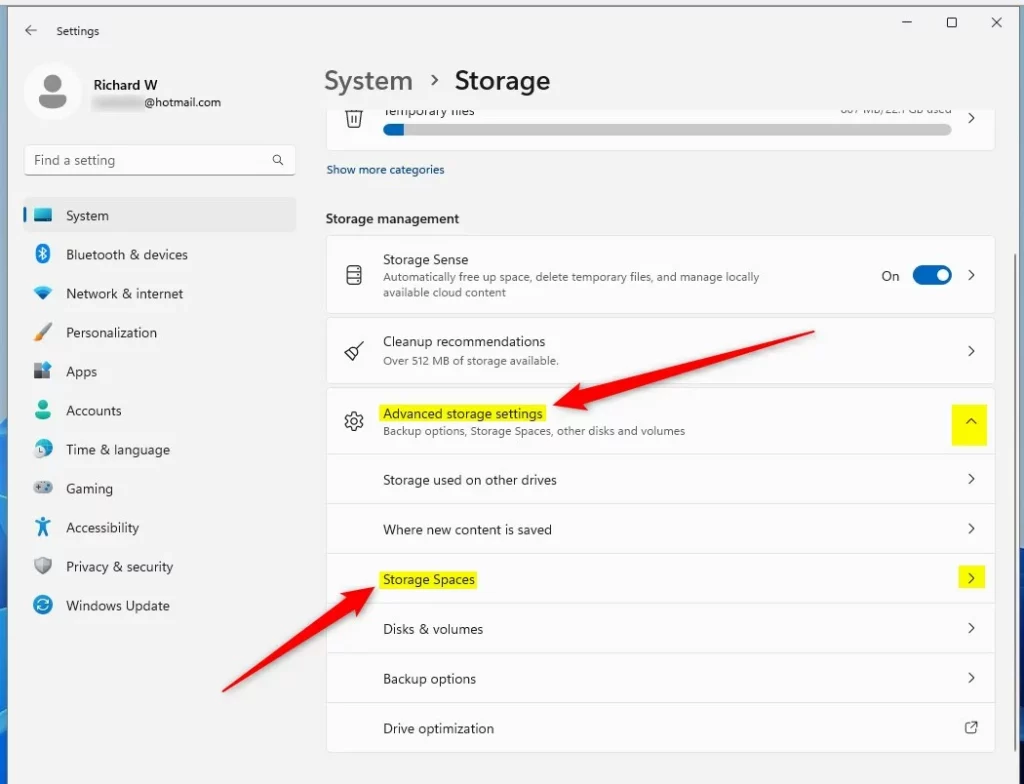
On the System -> Storage -> Advanced storage settings -> Storage Spaces settings pane, click Add button on the Add a new Storage Pool tile.
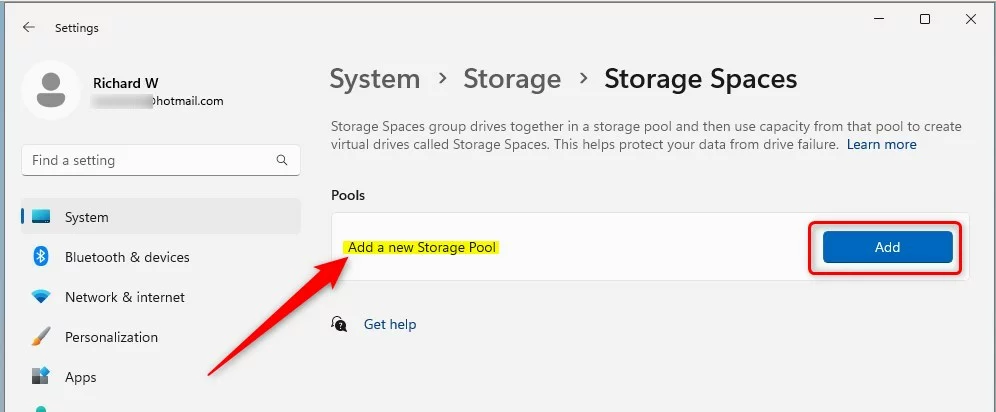
On the pop-up Storage Pool pop-up window, type in a new name for the Storage Pool. Then, under Available disks, select the disks you want to include in the new storage pool.
Then click Create.
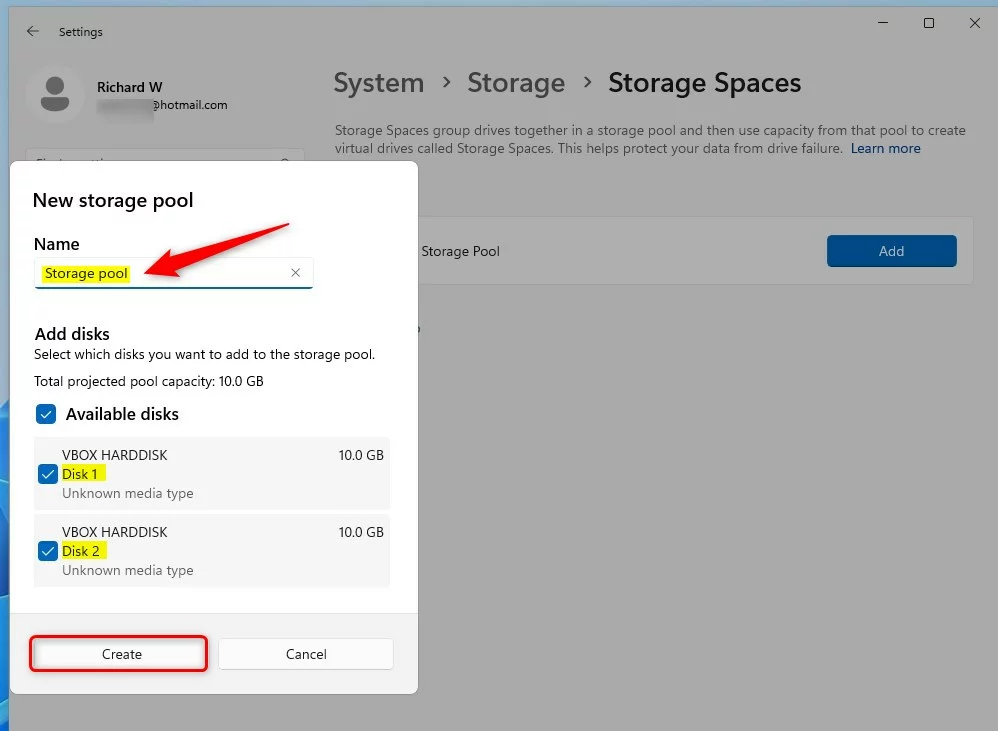
On the next window, choose the new storage space size and resiliency options:
Resiliency:
- Simple – requires at least two drives and provides no data protection.
- Two-way mirror – requires at least two drives, and there is data protection when a drive fails.
- Three-way mirror – requires at least five drives and provides data protection. Will withstand two drives failure.
- Parity – requires three drives with data protection and performance.
- Dual parity – requires at least seven drives and provides data protection and performance. Will withstand two drives failure.
Then click Create to create a new storage space.
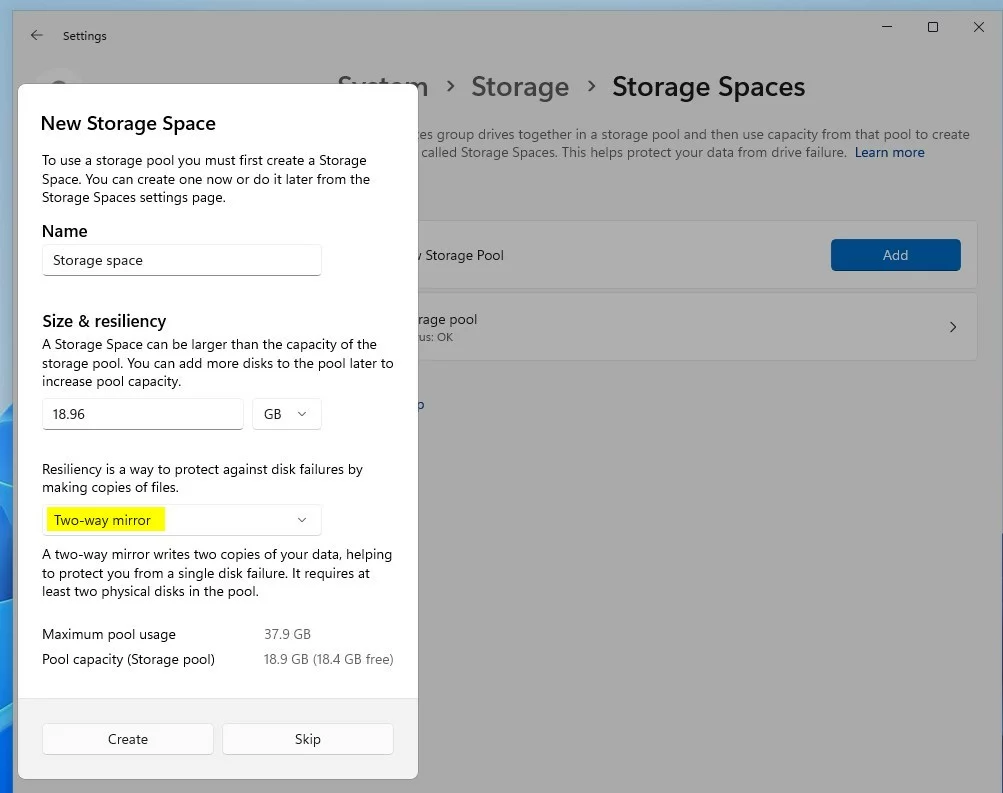
On the New volume window, provide a Label name, Drive Letter, and format the new volume using NTFS or FAT32.
When done, click Format to create a new volume.
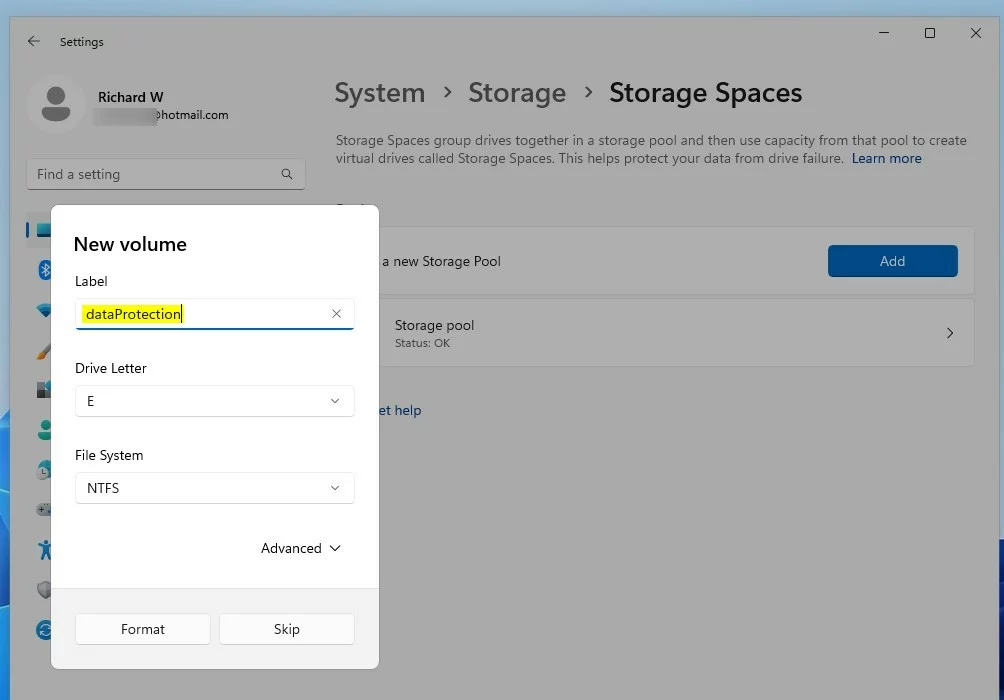
Once done, a new drive or volume should be created and accessible via File Explorer.
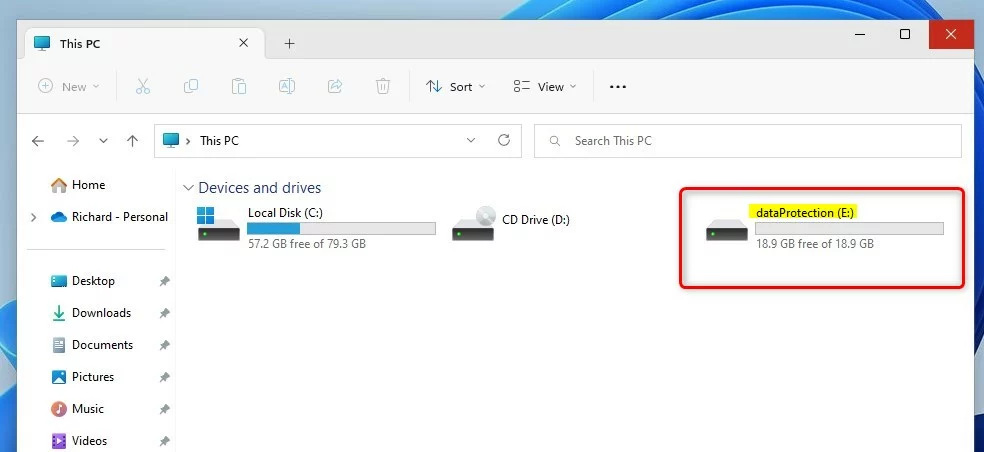
That should do it!
Conclusion:
- Storage Spaces in Windows 11 provide a seamless way to create a storage pool from multiple drives and allocate capacity to create virtual drives.
- Following the steps outlined in this article, users can create volumes that protect their data from storage failures while distributing data across multiple drives for fault tolerance.
- Utilizing Storage Spaces and storage pools ensures that data is stored on a fault-tolerant system, enhancing data protection and storage performance.
- If you have any feedback, suggestions, or additional insights about creating storage spaces and volumes, feel free to share them in the comments section below.

Leave a Reply